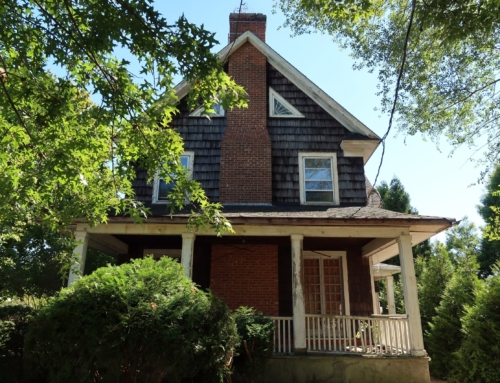
New HAMP Rules May Help Reduce Loan Principals
Q: I’m almost 62-years old and have been a Realtor for five years. Our home was appraised at $515,000 in early 2007 when we did a debt consolidation refinance. We would be fortunate to get $350,000 for our home today.
I applied for a loan modification with our lender 18 months ago. What I would like to do is get my primary mortgage reduced to $350,000 at today’s low interest rates on a 30-year fixed rate mortgage. If I sell my home in five years for $420,000, I would receive no equity. The lender would get it all.
If I sell my home in ten years for $550,000, I would receive $50,000 in equity, and the bank would receive the rest.
I would have no problem signing documents to that effect. So many of us “law-abiding-proud-credit-score individuals” don’t want to short-sale our homes nor do we want to be foreclosed on.
It seems that this would be great for the banks because it would at least give them the opportunity to recover much of the losses that occurred.
I’m not a banker, nor do I want to be. I’m probably missing something here but I thought this might be another avenue that banks and people in the know like you could look at.
I am sure that I’m not the only idiot that would be interested in this. I am on the opposite side of the people that leave their homes in shambles for the bank to clean up. Thank you for your time.
A: What you’re essentially proposing is an equity sharing agreement that would provide the lender with all of the upside in exchange for giving you a mortgage at current market value.
Something on the order of what you proposed has been around for a couple of months with some of the big lenders as a new part of the Home Affordable Mortgage Program (HAMP).
Here’s what’s happening: Essentially, for borrowers like you who are extremely underwater with their mortgages and meet a strict set of qualifications, a lender would agree to create two new loans for you.
The first loan would be at 100 percent of today’s value of the property. In your case, that would be a new first mortgage of $350,000. That loan would be a 30-year fixed-rate principal and interest loan set at or near today’s extremely low interest rates.
The second loan would be an interest-free loan. Each year, a portion of that second loan would be forgiven, with the idea that the entire second loan would disappear within three to five years.
Under the HAMP program, the second loan would disappear in three years. Some lenders are opting for a five-year forgiveness cycle for borrowers who are extremely delinquent on their mortgage payments.
The reason the lenders are agreeing to do this is that the federal government is going to pay a big chunk (up to around 18 percent) of the forgiven principal.
While I know this use of tax dollars is going to raise the ire of some of my readers, I’d like to point out that where we are with today’s real estate isn’t helping anyone. Homeowners who aren’t underwater or behind in their payments are finding their home values dragged down by those who are.
Since the April 30, 2010 end of the home buyer tax credits, home buyer demand has dropped off around 40 percent. At the same time, lenders are foreclosing on properties at a faster rate. And, sellers, who have been dying to get rid of their properties, have listed them, thinking that the housing market is getting stronger. Twice as many homes were listed in April as were sold. Housing inventory is back to levels last seen in 2009.
It’s basic economics: if you have too many homes on the market and not enough buyers, home prices will drop, and that’s bad news for the nation’s 68 million homeowners.
On the other hand, I don’t know for sure that this program is going to really help all that many people. It’s complicated, and the lenders are going to have trouble rolling it out. Their loan officers and customer service representatives are already confused by all of the different programs, technology and changes that continue to happen at lightening speed.
Indeed, within a couple of days, the folks who run HAMP decided that unemployment benefits could be used as a source of income and then a few weeks later decided that they couldn’t. Confusion reigns supreme.
Not all lenders are participating in this program just yet. It hasn’t been fully rolled out. Bank of America has started to roll it out for its Countrywide subprime mortgage customers. I’m told Fannie Mae and Freddie Mac will roll out something similar for their loans in the early fall.
But given the track record lenders have in granting permanent loan modifications to borrowers, I’m skeptical this plan will work. The original loan modification plan was a plan that allowed borrowers to apply for a loan modification and obtain a reduced interest rate on their loan and in some cases even have their loan balance reduced. Few borrowers benefited from the loan modifications and, now, I’m hearing that some lenders are becoming more aggressive in not approving short sales unless the buyers in these short sales decide to pay a price that is dictated by the lenders.
If borrowers are unable to refinance their loans, obtain loan modifications or proceed with a short sale, these borrowers may end up losing their homes in foreclosure.
You’re correct that there are many homeowners that would like to refinance and can’t. But the system is not making it easy for people like you to benefit from current low interest rates and lessen the financial burden and pressure on being a homeowner during these difficult times.






Excellent article explaining a reasonable solution.
Robb – Thanks.